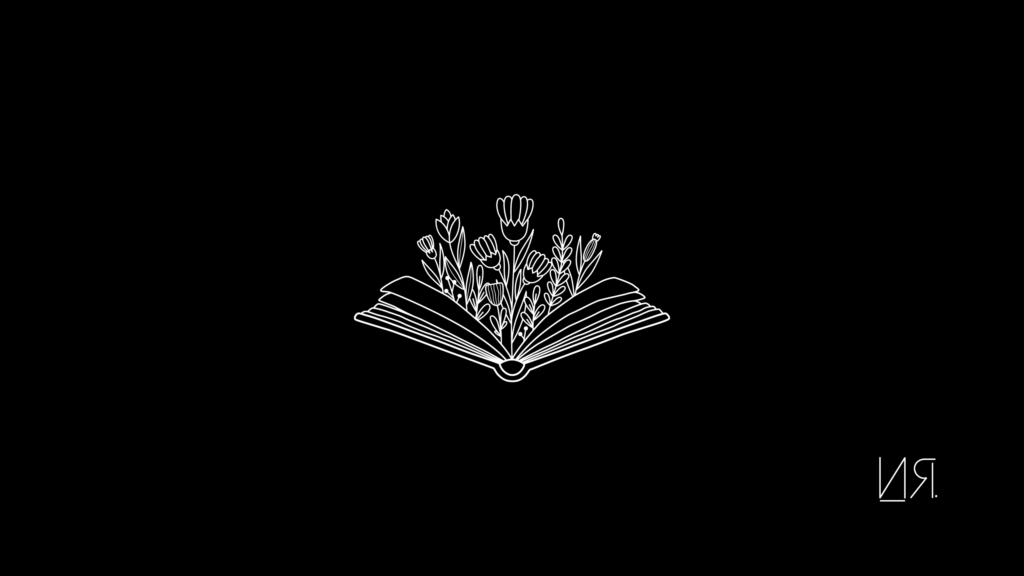Life’s a bitch
And then you die
That’s why we get high
‘Cos you never know
When you gasta go
Didn’t mean to start on such a note but these nihilistic thoughts came from a great philosopher by the name of AZ.
The poet from Queens, New York echoed those words on Nas’ classic album – Illmatic.
On the next song, Nas brings us into his life and aspirations vividly – talking about sipping champagne, while watching Ghandi as he wrote in his book of rhymes (all his words went past the margin too).
As a young boy in Lagos, I studied these lyrics, writing them in my own “book of rhymes.” Rewinding cassettes and writing each line until I wrote down a full verse.
My interest in words came from rap lyrics.
A decade later, I had picked up a reading habit as an engineer in Austin.
One of those books that lined my walls was Michael Eric Dyson’s Born to Use Mics. A Princeton PhD and professor at Vanderbilt wrote an entire book annotating the meaning behind that classic Illmatic album.
It explained the mindset of a 19 year old poet, who portrayed the rugged street life.
I didn’t get good grades in grammar nor comprehension, growing up.
I didn’t even study literature in high school.
My interest in writing didn’t come from a school teacher.
It came from a genuine interest in learning wordplay like the music legends I listened to.
Writing is easy when you just follow your interests.
It’s even easier when you develop a simple system that allows you to build a habit.
Writer’s high
There is so much “expert advice” out there about how to write but most people are still held back from it.
Most people don’t have the space, focus time, or clarity of topic on what to write about.
When they finally get inspired to write, the cursor keeps blinking, intimidating them as those threads of ideas flood their mind.
Zap! Gone.
They end up not starting at all.
Another day, no words written.
Patiently waiting for the muse to arrive.
Newsflash…she ain’t coming!
She’s busy motivating those that are perspiring with their creative practice.
You only discover what to write by following your interests.
Writing helps with reflection, self-discovery, clarity of purpose, and creativity.
These are very important things a lot of us complain about not having. Yet we don’t utilize a simple tool we all have access to – writing!
Good writing takes a while to germinate but does not happen in a linear way that we’ve been trained in schools.
Just like any habit, to write with ease, you have to make it easy to get to.
Organization is important to foster creativity.
Instead of relying on your willpower to go over the threshold, the best way for a habit to stick is to create an enabling environment.
You can do this by developing a simple system of note-taking.
You’ll never start from scratch again.
You can easily write with a one-step system (one note at a time).
Slip-box Writing
Earlier this year, I signed up for another writing workshop. The instructor had a module called “10X Your Writing Speed”
I was like “sure…How Sway?”
Then I went through the module and learned about Niklas Luhmann and his Slip-box.
Niklas Luhmann was a German sociologist that published about 70 books and 400 scientific publications.
This guy was like the Drake of scientific publishing. Prolific.
He did this with a slip-box system.
A lot of writers use this note-taking approach to never run out of ideas.
You can do the same.
Even better, you can create a digital version of a slip-box that has interconnected notes to generate ideas and insights.
It’s how I have written most of the letters to you this year.
With this structured way of writing, you will have a system that allows you to focus on self-discovery and development, while generating insights that can make an impact.
Here are 5 things to know about slip-box writing.
1. Writing is easy if you have a system
Writing is easy…
…if you create an environment to make it effortless.
Most of my writing these days begins on my phone. That’s where I keep all my notes.
I have a template that I duplicate each time I take notes.
It’s a digital version of the note-taking system of Niklas Luhmann. It has drastically increased my idea generation and takes less effort.
In fact, I wrote this note while I laid in bed.
Niklas Luhmann developed a system to write and develop his thoughts with ease.
His slip-box was his dialogue partner, main idea generator, and productivity engine.
It’s the simplicity of the system that makes it work.
Here’s how it goes:
- He followed his interest by reading.
- He took notes on index cards and stored each note in a slip box.
- He numbered each note with a numbering system that linked related topics and ideas together.
Writing is not a linear process. Insights happen from the exploration of ideas.
The slip box method allows you to explore different ideas that synthesize in a system outside your brain.
It’s not ingenuity or will power that helps you get your work done. It is working in the right environment that reduces the resistance to work.
One of the reasons this method is not so popular is that the system is so simple that it is counterintuitive for people.
“I only do what is easy. I only write when I immediately know how to do it. If I falter for a moment, I put the matter aside and do something else”
~ Niklas Luhmann
Before you beat yourself up about not writing, how about you set the scene.
Create a system that allows you to get to your writing with ease. Create your digital slip-box.
2. Writing happens best with an undistracted brain
Don’t complicate your writing workflow.
A myth goes that NASA was trying to figure out how to use a ball-point pen in space.
Ball-point pens depend on gravity to make sure the ink flows to paper.
Apparently a lot of money was spent to invest in the development of a “gravity-independent” pen (oooh, sounds so cool)
The story goes that the Russians faced a similar issue.
They decided to use pencils.
Whether this is a real story or not.
It is clear.
Don’t overcomplicate things.
To develop a smart note taking approach, don’t overcomplicate the process.
What we need here is an undistracted brain and a simple workflow.
You need three things:
- a note-taking utensil (pen and paper, phone, or computer)
- a slip-box with a reference system (a place you will arrange your notes)
- an editor (a place you can come back to refine your ideas)
That’s all you need.
“The slip-box provides an external scaffold to think in and helps with those tasks our brains are not very good at, most of all objective storage of information”
~ Sonke Ahrens, Author of How To Take Smart Notes
Develop an easy workflow.
3. Writing is an art of interlocking tasks
…that help you grow and boost creativity.
Writing isn’t just one thing, each task is separate and different.
Multitasking is not a good idea.
You are not good at doing it.
There is a cognitive cost from switching from one task to the other.
Each writing task requires a different type of attention. The reader, the writer, the researcher, the editor.
Become an expert not a planner.
Until you take the training wheels off, you will continue to make “plans to write”
If you want to write, writing is the only way.
The expert over time learns the most important task to do next to get to the goal.
The slip-box provides an opportunity to know the necessary task at hand. More research, writing, or editing?
Understand that writing is not linear but an art of interlocking activities.
When you learn the different tasks, you become an expert of the art and not just a planner.
4. Note-taking tracks progress
Writing with this simple note-taking method is an investment that gives rewards of compounding “interests”.
When I wrote press play, I had a simple strategy.
Write for 15 minutes every day. It got me across the finish line.
Instead of just writing towards a goal like a book, you can write to get clarity, unlock your creativity, and watch your intelligence grow.
Anthony Trollope, a fiction writer, used to write 250 words every 15 minutes.
After a while, he could write three novels in a year. This shows how consistency adds up.
However, for non-fiction and academic writing, the number of pages is not a good measure of progress because you have to read, research, and then write.
So a better measure of progress is – how many notes you have written.
The slip-box allows you to participate in deliberate practice.
Deliberate practice is important to facilitate growth because you can get feedback, monitor your progress, and get into flow states.
With this note-taking approach, your learning and investment compounds. The more notes you take down, the more connection points (between notes) and new insights you can generate.
Luhmann used to do six notes a day.
With three notes a day, you can be on your way to publish one well-written book a year.
Since the beginning of the year I have a total of 180 notes on topics from technology, commerce, NFTs, psychology, creativity, human consciousness, to music.
Follow your interests and build up your notes to bring structure to your thoughts, track progress, and compound your knowledge.
5. Writing with structure is the way
Writing anything is all about taking notes.
I’ve been publishing articles online since 2014.
Almost a decade of publishing and I’ve learned a lot along the way.
This note-taking approach is one of the biggest lessons I’ve learned.
Here’s how Sonke Ahrens describes the approach in his book How To Take Smart Notes.
- Write down your fleeting thoughts (keep a pen handy).
- Have a reference notes system: This is where you categorize and source where your ideas came from.
- Write literature notes: Jot the main ideas of content you have just consumed – in you own words. Write it so it makes sense to you.
- Write a permanent note into your slip box: Look through your literature and fleeting notes. Develop an idea and boil down the insights into a permanent note. This is a simple sentence of the idea. Then link it to other ideas in your slip-box.
- Develop your ideas: Mix and match your notes and ideas. Find areas where your ideas lead to. Plug holes with more research, if necessary.
- Start generating ideas for your topic: It will be based on ideas that are in your slip box and not unfounded ideas.
- Write a draft of your manuscript: Determine structure that allows for persuasive writing. Use your notes as the foundation for the manuscript.
- Edit your manuscript: Give yourself a pat on the back. Start refining your thoughts with the next manuscript.
“More is unnecessary. Less is impossible”
Explore your ideas with a structure.
When you have a critical mass of ideas, draft and refine your manuscript. Move on to the next.
Final Thoughts
Writing is not a linear process.
It is an art of interlocking tasks.
The expert does not dwell on planning, they start to learn about how to take the next most important step. They learn through practice.
Taking notes is a habit that provides deliberate practice.
It simplifies the process, so your brain does not get distracted. It gives a method that can be tracked. It breaks down each process into different buckets that require different types of attention.
It provides the structure so that you can generate insights and write manuscripts without the pressure of starting from scratch.
Start taking notes and build out your digital idea generator.



